…THAT YOU MIGHT NOT KNOW, by the co-author of Batman: The Definitive History of The Dark Knight in Comics, Film, and Beyond…

It’s pretty easy for a writer to call their book the “definitive this” or the “definitive that.”
Historians Andrew Farago and Gina McIntyre, however, have pretty much pulled that off with Insight Editions’ Batman: The Definitive History of The Dark Knight in Comics, Film, and Beyond.
The 400-page, coffee-table hardcover manages to capture the Caped Crusader from just about every angle over his 80-year history, an astonishing work that’s only enhanced by the ridiculous number of illustrations in the volume, many of which are exceptionally rare.
There’s also a bunch of extras inserted into the edition, making this pretty much something that every Batfan should have on their list as Chanukah and Christmas approach.

(Side note: I’m pretty pleased to be cited in the book. You can check out some excerpts from 13th Dimension as you peruse it. But if that’s not enough to get you to buy it, how about these other folks who were interviewed: Christopher Nolan, Mark Hamill, Tim Burton, Grant Morrison, Julie Newmar, Joel Schumacher, Scott Snyder and Frank Miller. And that’s just a small fraction.)
Anyway, even if the book is “definitive,” there were still some odds and ends that didn’t make it into the volume, so here’s Andrew Farago with BATMAN’S STRANGEST CASES: 13 OFFBEAT FACTS ABOUT THE CAPED CRUSADER.
Some of these facts you likely know. Some you probably don’t. I know I learned some things reading this myself — which is a real indication of just how valuable the book is.
So ask Alfred to pour you a cup of Earl Grey and check this out:
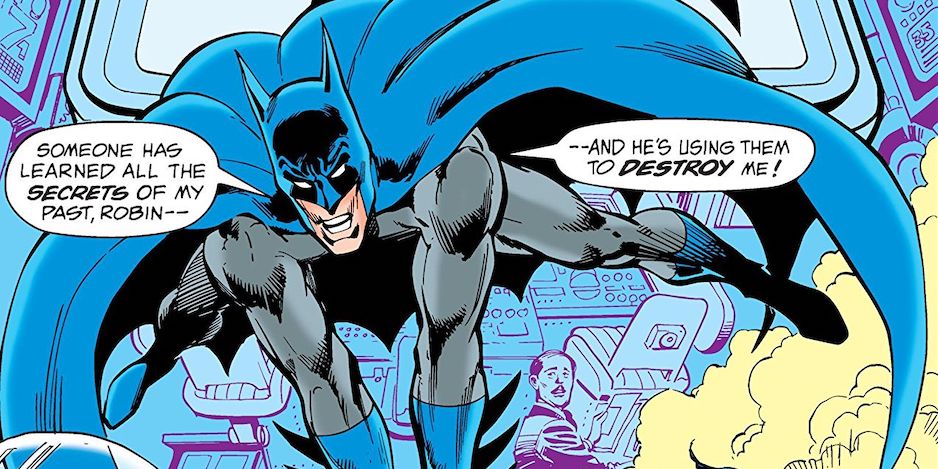
From The Untold Legend of the Batman #2. Cover by Jose Luis Garcia-Lopez and Dick Giordano.
—
By ANDREW FARAGO
So what kind of work goes into writing the definitive history of Batman’s first 80 years? Well, for starters, it involves reading a couple thousand comic books. And watching about 300 hours’ worth of movies, television shows, and cartoons. Dusting off my NES and playing the 1989 Batman video game for hours on end. Not to mention more than 40 years of wearing Batman pajamas, playing with Batman toys, collecting the official Topps trading cards and eating the official Batman breakfast cereal.
In addition to all of that painstaking research, I conducted about 150 interviews with writers, artists, actors, directors and historians. By the end of the experience, I was either going to have the ultimate Batman book or I was going to become Gotham City’s greatest supervillain.
Fortunately for Gotham, my co-writer Gina McIntyre stepped in and Insight Editions published Batman: The Definitive History of The Dark Knight in Comics, Film, and Beyond – available now — and I decided to use my talents for good instead of evil.
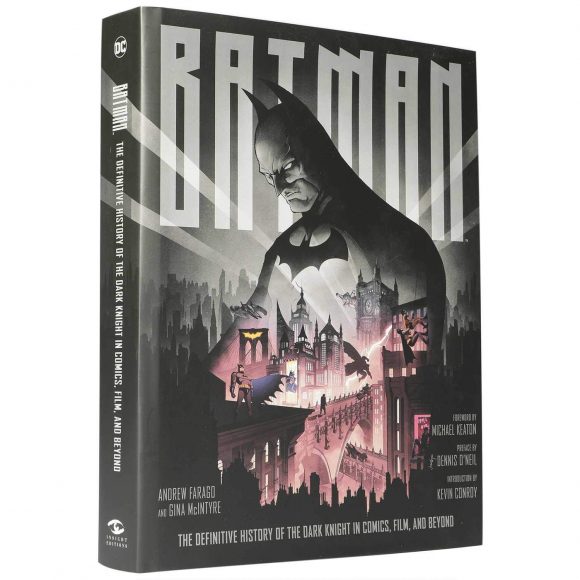
Dan Greenfield, in an effort to make sure I stay upon the straight and narrow path, offered me the opportunity to share some of my favorite Batman trivia with you, so I combed through my archives and found some of the best stories that I wasn’t able to include in B:TDHoTDKiCFaB (Holy acronym, Batman!). Enjoy—and please remember to use these stories only for good.
Batman’s counting on you.
—
1. It’s My Birthday, Too, Yeah. Legendary Batman writer and editor Denny O’Neil was born in May 1939—the cover date of Detective Comics #27, the first appearance of Batman. And it didn’t take the young O’Neil long to discover comic books.
“I was a comic reader from a very young age, by age five, maybe six,” recalls O’Neil. “And back then, we traded comics. Once a month, and this is going to sound like bad sentimental tripe, but I’d load up my little red wagon, and I would go up and down Claxton Avenue, stopping at the houses of the kids I knew who read comics, and we’d trade what was in my little red wagon for what they had. For the dime it cost my father to buy an issue of Superman, I got to read twenty other stories.”
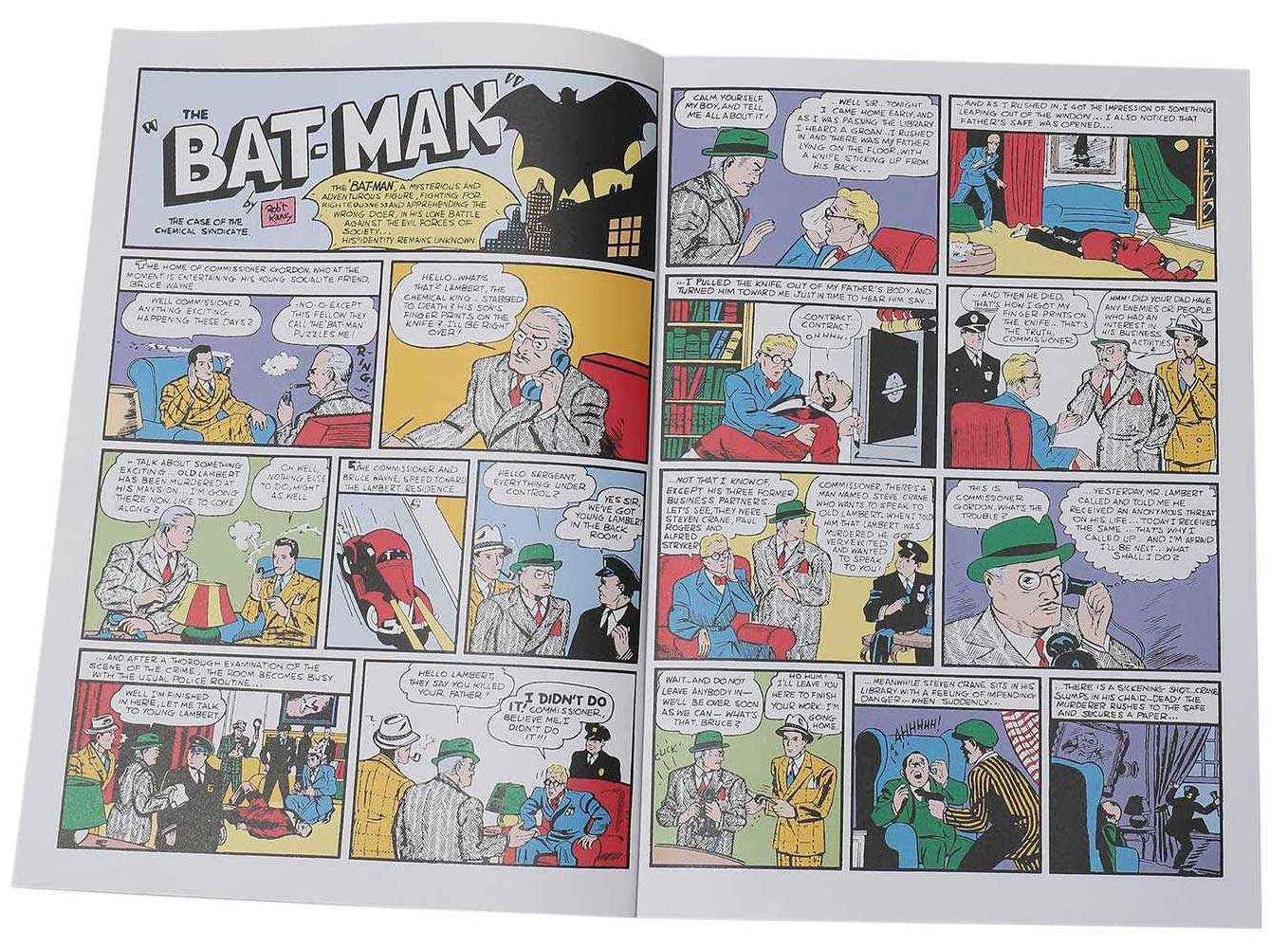
Detective Comics #27, by Bill Finger and Bob Kane. Most of the images in this article are culled from Farago’s book.
—
2. Batman vs. Chairman (of the Board). The Batman TV series debuted in January 1966 to tremendous ratings. In the second season, every A-list actor in Hollywood was calling the producers, hoping to get cast as a villain or to make a brief cameo appearance. Although many celebrities appeared on the series over the course of its three-season run, it was impossible to accommodate all of the actors’ schedules.
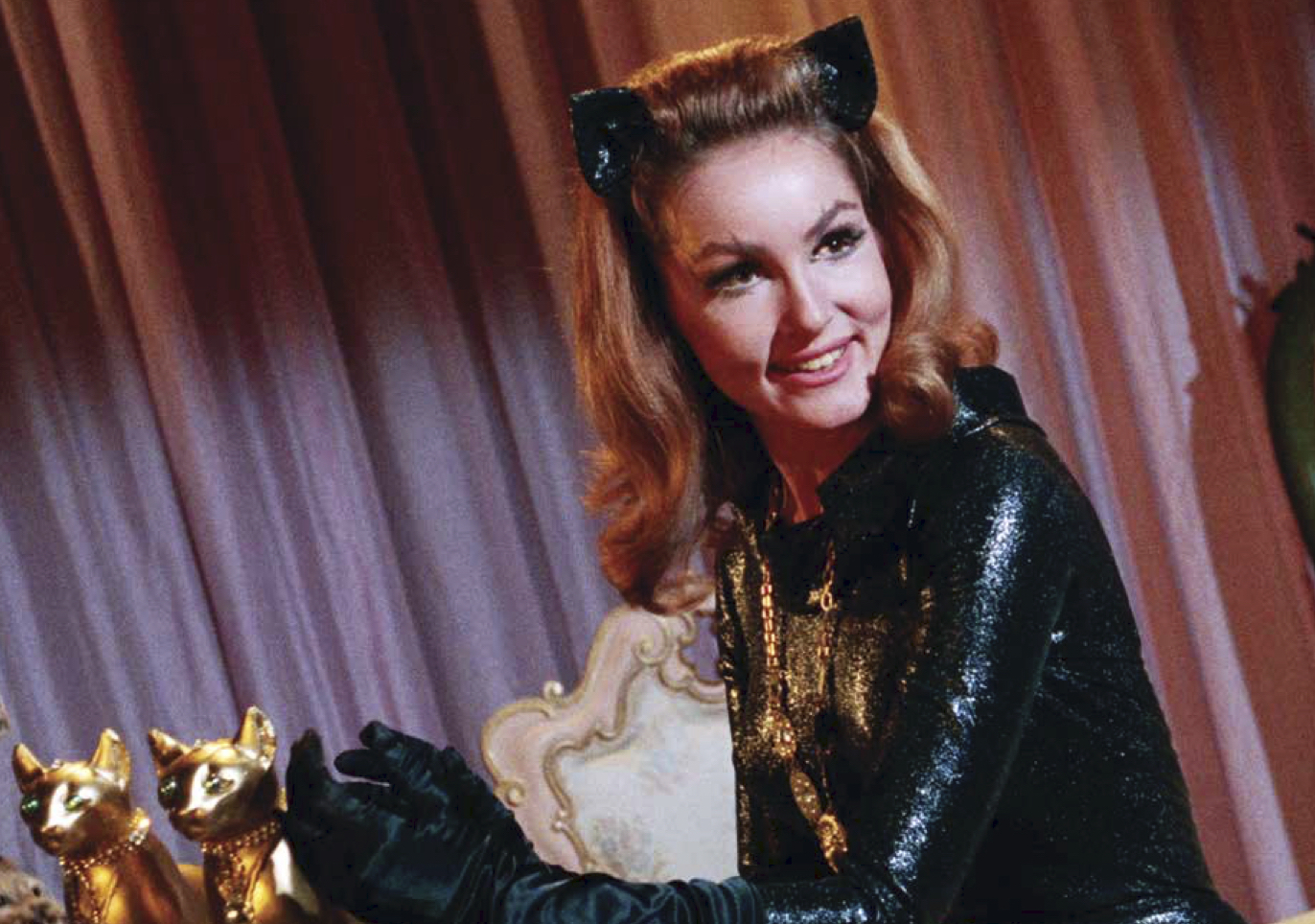
Julie Newmar
“[The series was] perfection! You just have to love and adore and admire and thank and credit all the people, all the way up,” says Julie Newmar, who played Catwoman for the series’ first two seasons. “The casting was brilliant. Everything they did on that show was just first-rate. It knocked the nation out. They made it so much fun to be both naughty and nice. We needed that. The Vietnam War was happening, and we needed to go off our rockers for a while. It was a perfect show, and we just needed it.
“It was rippingly good fun, too. That’s why so many film actors wanted to be on the show. Film actors did not do TV—that was a big no-no. It was too many steps down, no rehearsal time, and everything had to go really fast. But even Frank Sinatra begged the producers to write something for him.”
—
3. The Inside Story of the Outsider. Batman’s costume got an upgrade in 1964 thanks to artists Carmine Infantino and Joe Giella in the pages of Detective Comics #327, but an even bigger change at the start of the “New Look” era came the following month as Alfred Pennyworth perished in the line of duty, giving up his own life to rescue Batman and Robin from certain death.
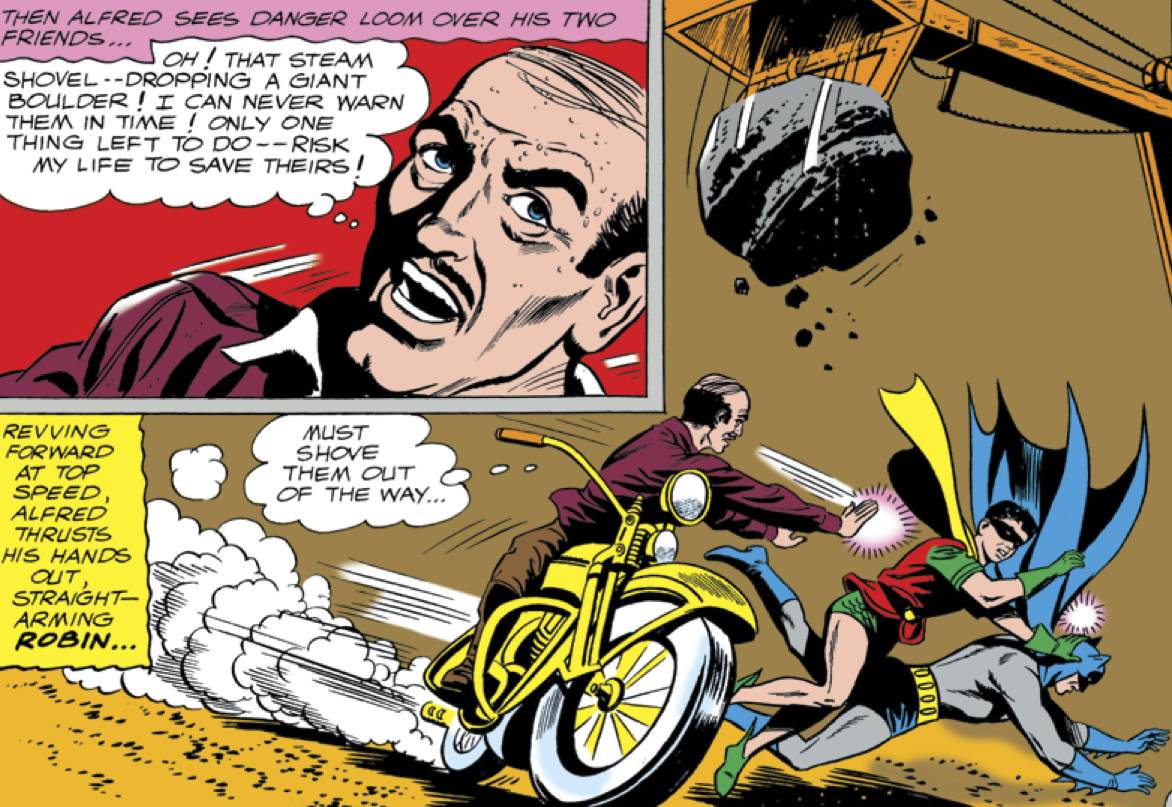
Detective Comics #328. Art by Sheldon Moldoff and Joe Giella.
Or so it would seem! Unbeknownst to Batman and Robin, their loyal butler clung to life and was revived by a scientist named Brandon Crawford. The strange device that Crawford used to rejuvenate Alfred transformed him into a bizarre villain known as the Outsider. While Alfred was unaware of his own identity prior to his transformation, he retained his knowledge of all of Batman and Robin’s secrets and used them to menace the Dynamic Duo over the course of about two years.
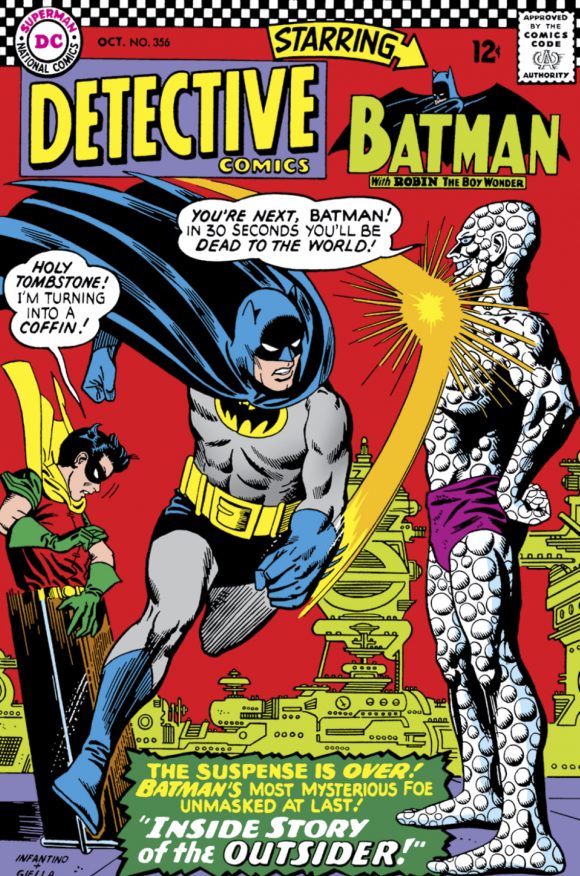
Carmine Infantino and Joe Giella
The behind-the-scenes reason for Alfred’s return was that the Caped Crusader’s butler played a prominent role on the live-action Batman TV show, which had become a huge hit. Both DC Comics and ABC television executives wanted Batman’s comic book continuity to reflect the TV show (and vice versa).
Upon recovering his true identity, Alfred immediately resumed his duties as Bruce Wayne’s gentleman’s gentleman, not even taking so much as a day off. That’s dedication.
—
4. Old Man Bruce. The Dark Knight Returns is now considered one of the greatest Batman stories of all time, but when it was first proposed by Frank Miller, it was far from a sure thing.
“In 1983, Frank flew to San Francisco as a guest of a comics convention,” recalls famed comic book editor Diana Schutz, a longtime friend of Miller’s. “I was still living and working in the East Bay, and Frank asked me to come meet him in the city at the show—where it was, of course, impossible to talk. So, we went for a walk.
“While we walked around town, Frank began describing his new project for DC. He was so excited about this idea: The story would feature an aging Batman, a Batman ‘around 60 years old, an old guy,’ he said. I started laughing. ‘Frank,’ I told him, ‘no one’s going to want to read about a 60-year-old Batman!’
“Well, I wouldn’t actually start editing comics for another year or two, but so much for my early editorial acumen!”
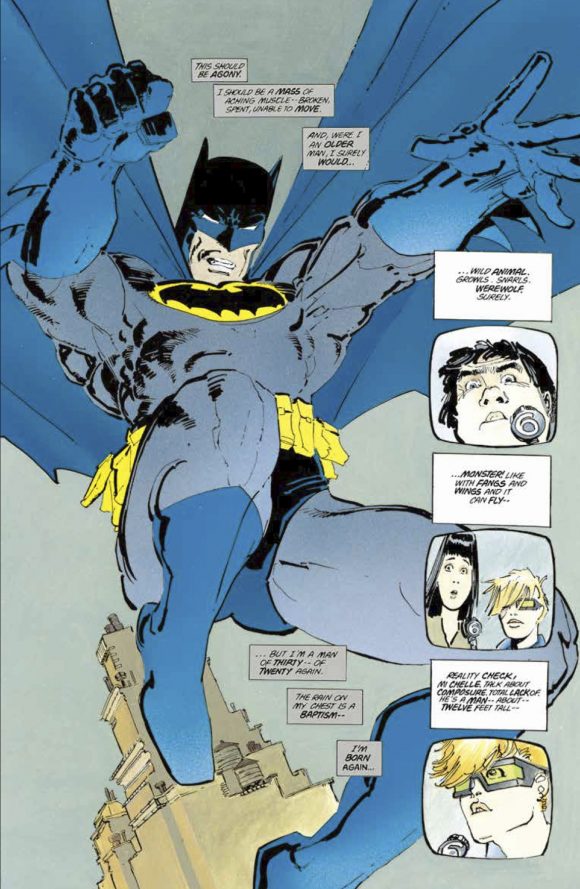
Miller and Klaus Janson
—
5. Live, from New York! It’s… A Death in The Family! Jason Todd’s tenure as Robin was a tumultuous one, and his status as a second-class sidekick wasn’t helped by writer Jim Starlin’s disdain for the character. Editor Denny O’Neil, recalling a pair of phone-in polls conducted by Saturday Night Live to determine the fates of Larry the Lobster and Andy Kaufman, wondered aloud at an editorial retreat if DC could allow its readers to decide whether Jason Todd should continue as Batman’s crimefighting partner.
“Oh, it certainly was a stunt. No doubt about it, and I was there,” recalls DC editor Mike Gold. “All of us on the editorial side met with [executives] Jenette Kahn, Paul Levitz and Dick Giordano to figure out new cool stuff to do with Batman. Denny did indeed discuss the idea of the phone-in stunt, and since I had done a number of those things in the past as a disc jockey, I explained how that happens, how AT&T works these things, and what type of resources all that takes. There’s no question that there wasn’t a lot of love for Todd, but it seemed like a good stunt.”
DC advertised the phone poll in its 1988 A Death in the Family story arc. By a narrow margin, fans condemned Jason Todd to death… although he later returned to life as the antihero known as the Red Hood.
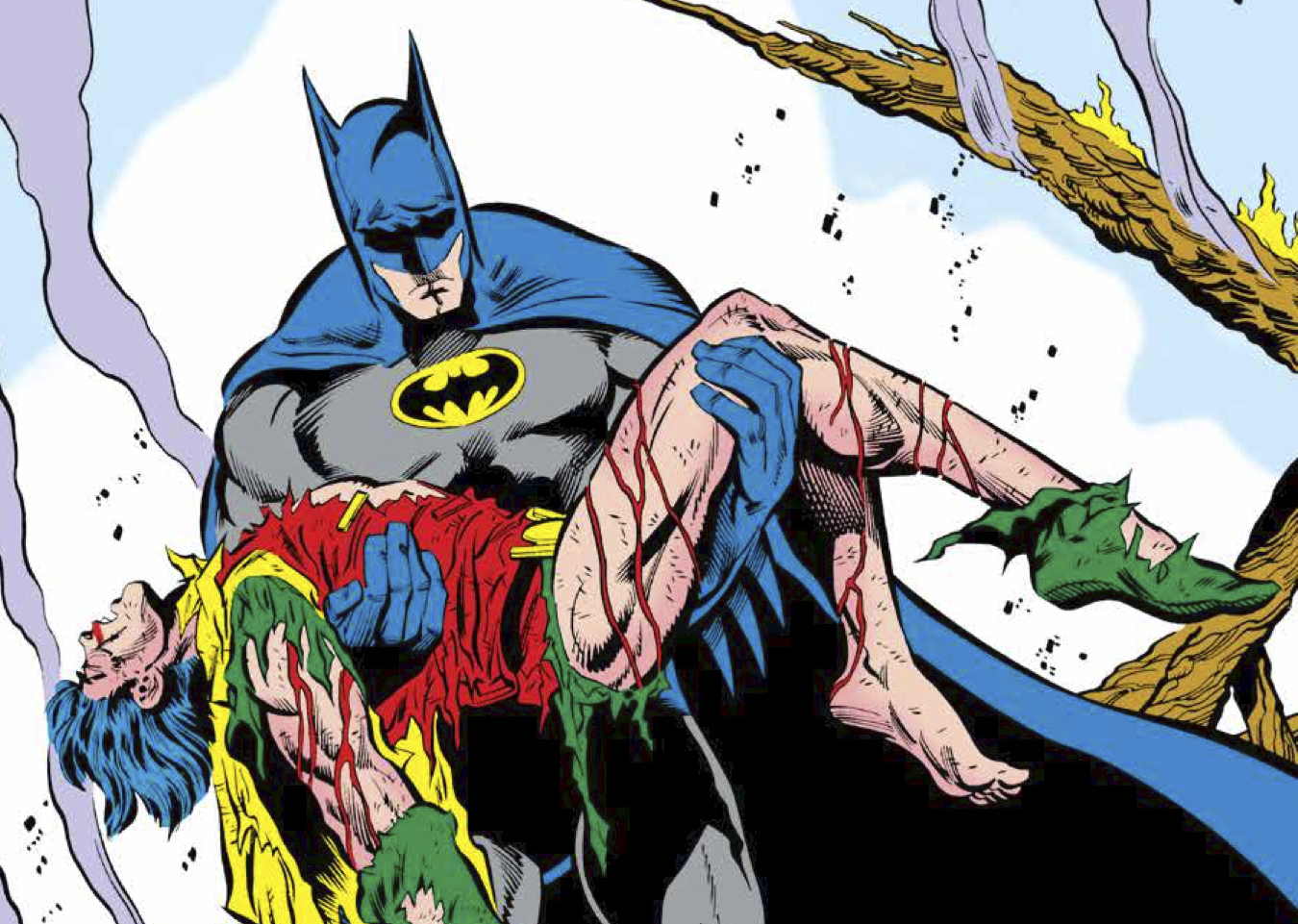
Jim Aparo and Mike DeCarlo
—
6. The Dynamic Uno. Michael Keaton’s Batman was a solo crimefighter, but if Warner Bros. had gotten their way, he would have battled the Joker alongside the Boy Wonder.
“Tim [Burton] and I had a nightmare trying to squeeze Robin into the script. The studio really wanted Robin in there, because everybody knows it’s Batman and ROBIN,” says 1989 Batman screenwriter Sam Hamm. “So we were plotting. We just couldn’t come up with any scenario that made sense. This guy, he’s dark, he’s disturbed, he’s trying to work out his own issues—so he brings in a kid to be his assistant. It just didn’t jibe at all with the version of the character that we were trying to establish. But the studio was vehement that we introduce Robin.
“I told Tim, I’ll fly down this weekend, and we’ll walk around in a circle until we get it figured out. And we walked around in a circle for two days. Saturday night, we said, OK, we can’t do it. We’ll call them up tomorrow and tell them we can’t figure out a way to get Robin in.
“Literally ten minutes before we made the call, we came up with a way to get Robin in. We had a really fun sequence that drops the character in, introduces him, promises trouble to come, then you get out. We were very, very pleased with that, and Robin was in all the drafts that I wrote for the studio.
“Then they got over to London and started shooting the movie. They had not cast the part, but they had built props for the big sequence where he was supposed to be introduced. At this point, the movie was about $20 million over budget, and they were asking, what can we lift out of this thing? What can we pull out? And everybody’s eyes lit up—Robin! Snip! Robin got cut from the script. And all that misery was for nothing.”
—
7. Mark Doesn’t Know Jack. Mark Hamill lent his voice-acting skills to a bit part in the early Batman: The Animated Series episode Heart of Ice, and wasted no time in letting the production team know that he wanted to work with them again. When their original choice for the Joker, Tim Curry, fell through, they invited Hamill to try out for the role—but warned him not to model his performance on Jack Nicholson’s memorable turn as the Clown Prince of Crime in the 1989 Batman film.
“When I auditioned, they had a little black-and-white drawing of the Joker, that iconic image of him with his finger pointing straight up” Hamill recalls. “The only direction on the copy was, ‘Don’t think Nicholson!’ And I thought, ‘Oh God, don’t remind me that the great Jack Nicholson played this part!’ It was intimidating enough already. Cesar Romero and Jack Nicholson had made such a deep impression on me.
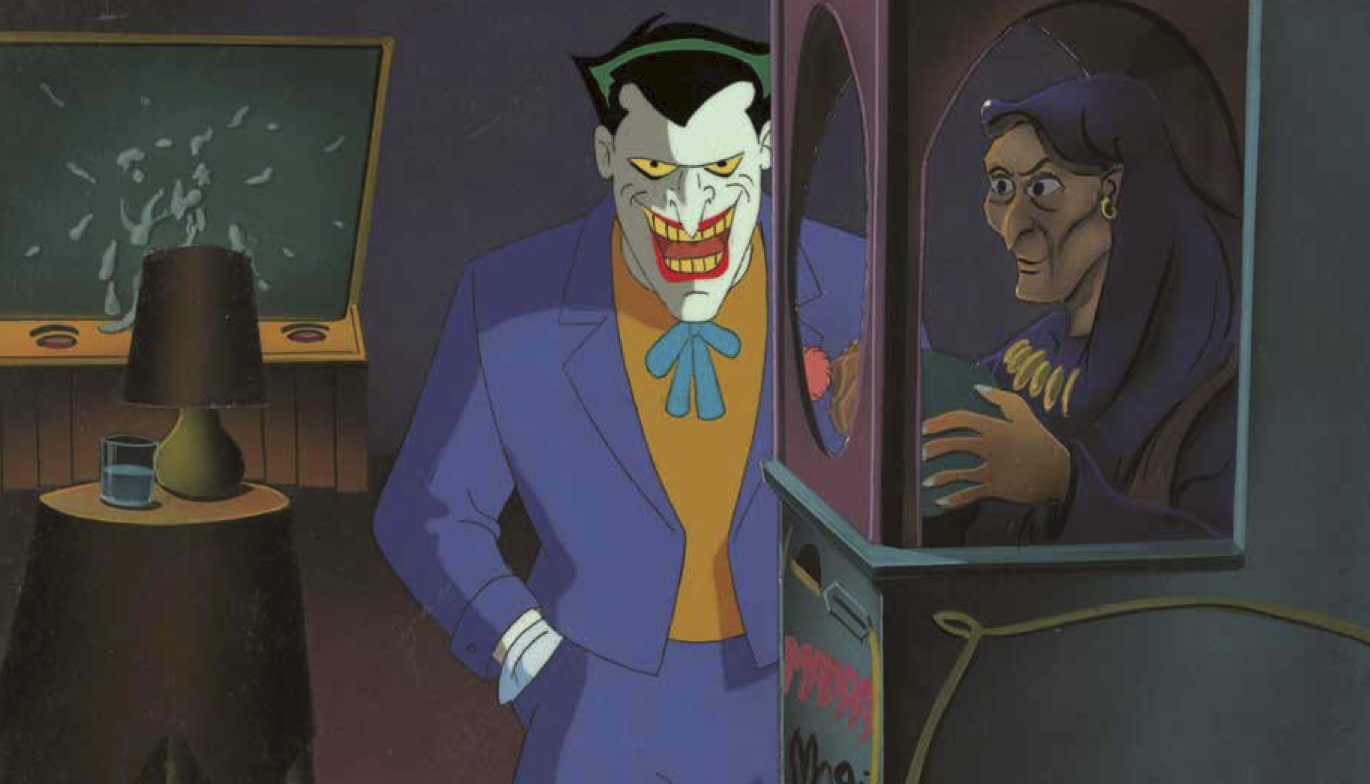
“I remember thinking that his teeth were so prominent, like the Blue Meanie in Yellow Submarine, and I incorporated a little bit of that in the voice. Claude Rains also influenced me, in The Invisible Man. ‘You’re crrrazy to know who I am, aren’t you? Alright, I’ll show you!’ He had that great sort of gravitas and grittiness that was very arresting. And obviously he wasn’t seen in the role, except at the very beginning and end, so his voice was crucial to get that character across.
“The Joker teeters between being lucid and being completely unhinged from reality. That sort of wavery… uncertainty. Like he’s trying very hard to maintain his composure without just bursting out and becoming an uncontrollable lunatic.”
—
8. Sword of Man-Man. When it came time to find a perfect foil for Batman in the epic Knightfall storyline, writer and editor Denny O’Neil consulted his research library and discovered that the natural enemy of a bat is… Azrael?
“I got the character by looking up ‘Who is the natural enemy of bats?’” says O’Neil. “The answer to that is man. We are the largest source of extinction for the bat community. So what am I going to do, create a character called Man-Man? No.
“I was thumbing through Funk and Wagnall’s encyclopedia of mythology, and the Bible, and this name caught my eye, ‘Azrael.’ I read up on it and thought, ‘An evil angel, that’s something that hasn’t been done. It’s got obvious story possibilities.’”
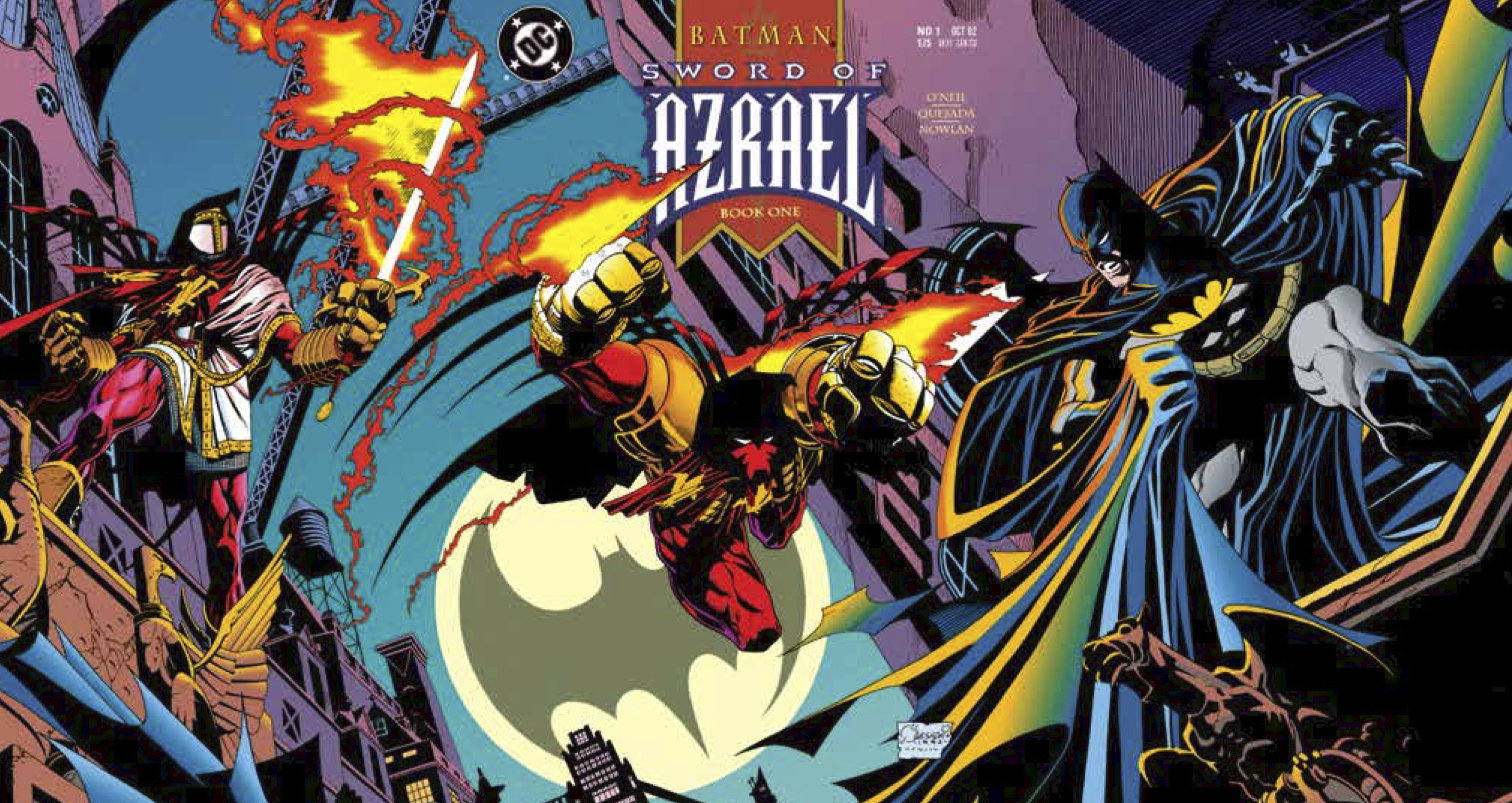
Joe Quesada and Kevin Nowlan
—
9. Lucky 13. Mike Friedrich broke into comics as a writer while he was still a teenager, but many creators worked most closely with him as an artists’ representative through his talent agency, Star*Reach. His clients included Jeph Loeb and Tim Sale, and one of Friedrich’s suggestions had a major impact on their Batman miniseries The Long Halloween.
“I remember talking to Jeph Loeb, who’d sold [DC on] the idea of doing a 12-issue miniseries called The Long Halloween. I said no, ‘Long Halloween: THIRTEEN issues, October to October,’” laughs Friedrich. “Then [Jeph] went back and got it extended to thirteen issues. Because, of course, my job was to make as much money for my clients and get as much work for them as I could, and doing thirteen issues was more than twelve. Besides, it made perfect marketing sense to do it that way.”
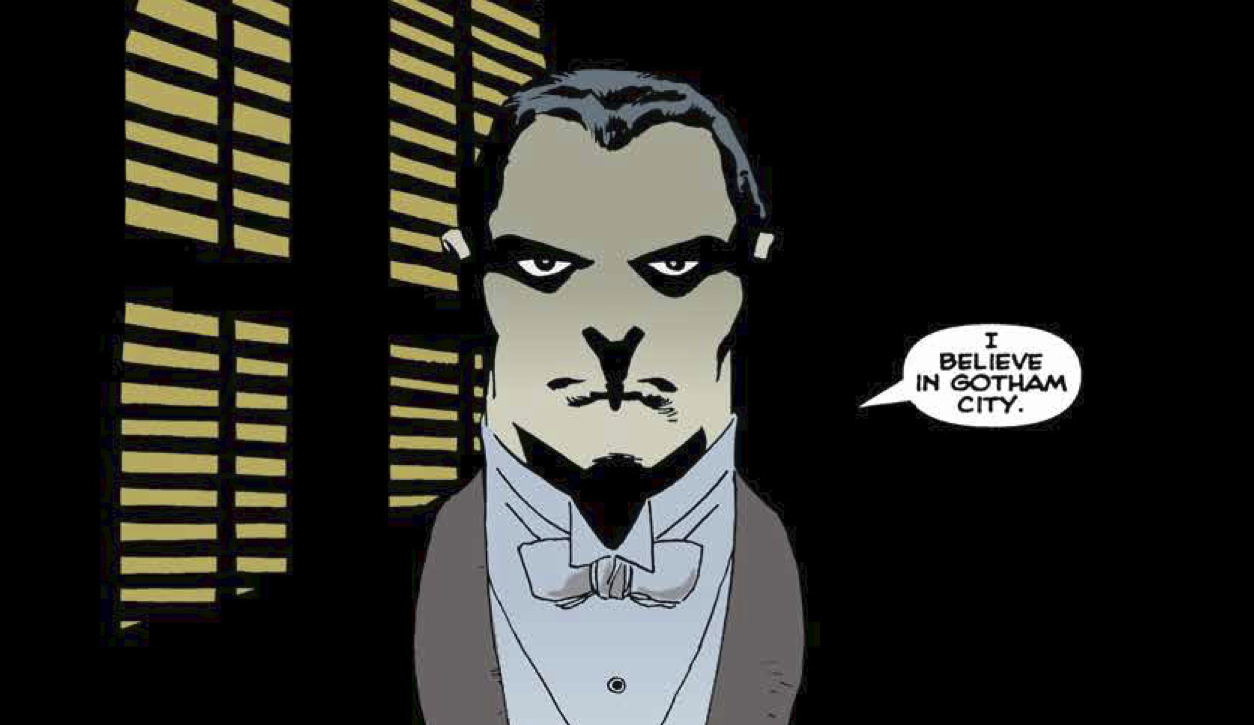
Sale
—
10. Batman: Uncaged. Despite the negative critical reception to the 1997 feature film Batman and Robin, the film turned a profit at the box office and generated considerable merchandising revenue. Even diehard fans of the film might be surprised to know that director Joel Schumacher considered returning for a third Batman movie.
Schumacher contemplated a return to Gotham, but noted that the franchise “was running out of villains. I thought of the Scarecrow. I went to see Nic Cage on the set of Face-Off and I asked him if he would play the Scarecrow, and he said yes. I also met at my house with Madonna, and I thought she might be a great Harley Quinn.
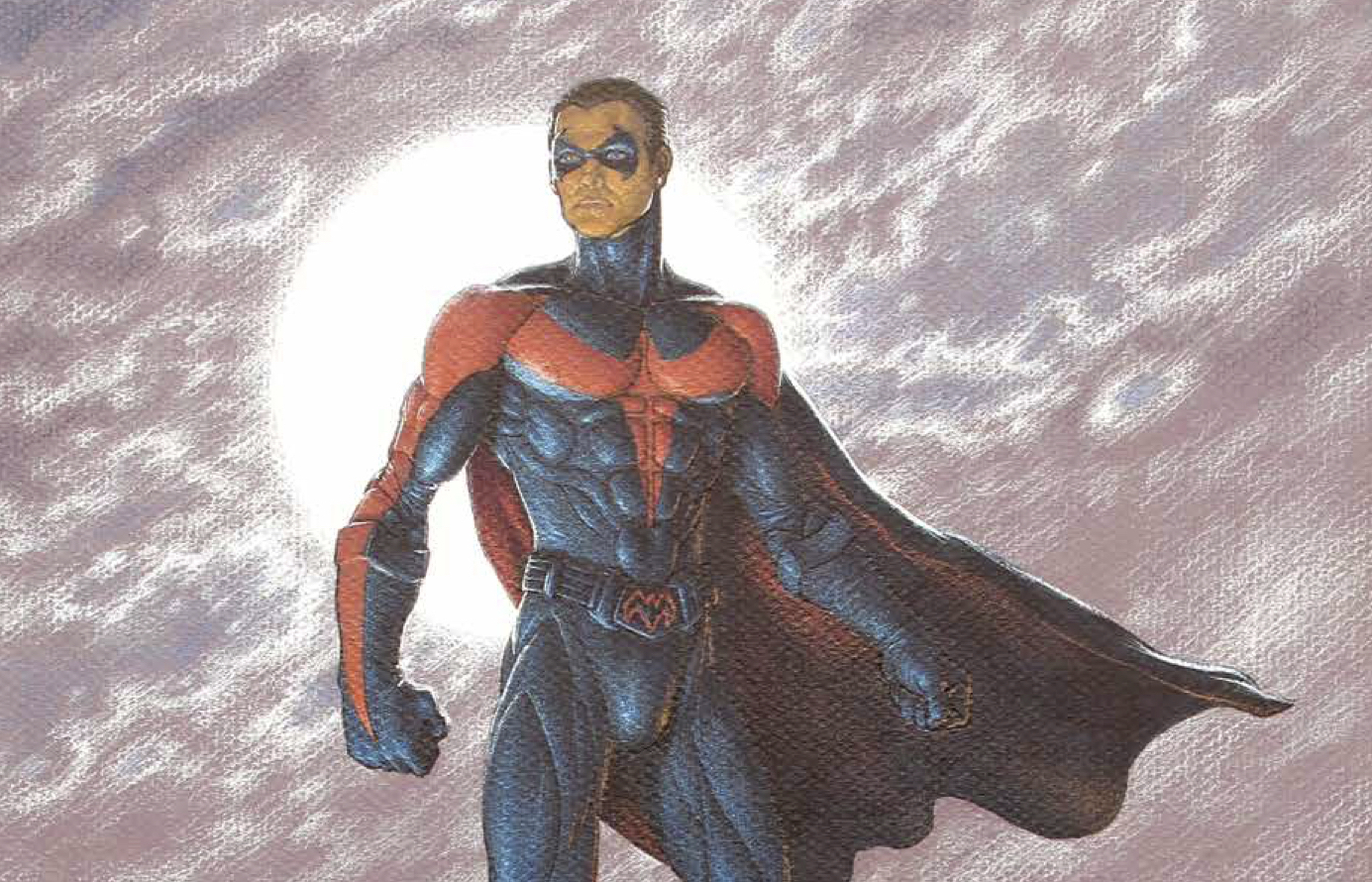
Costume illustrator Miles Teves
“But then I was on a press tour all over the world, I was opening toy stores in Sydney, Australia, and I thought, ‘What is my life?’ I decided I can’t do another John Grisham [movie], and I can’t do another Batman. Whether they would have wanted me to, in the long run, was beside the point. It was very hard to leave Warner Bros. It was painful. But I really wanted to do 8mm, because it was as far from a summer movie as you could get.”
—
11. Milton Bradley Presents: No Man’s Land. Batman assistant editor Jordan B. Gorfinkel (known to friends and fans as “Gorf”) changed Gotham City forever when he proposed the No Man’s Land story arc, an epic crossover which saw the city devastated by a massive earthquake. His inspiration for the story came in part from an unexpected source: Risk, Milton Bradley’s strategy board game of diplomacy, conflict and conquest.
“Let’s level the playing field entirely, literally and metaphorically,” says Gorf. “Let’s see what happens when you take Batman and bring him back to his roots. He is forced by circumstance to fight the good fight without any support. There’s no Batcave, there’s no Commissioner Gordon, there’s no sidekicks. What would Batman do? Will he continue to embrace being the lone Dark Knight, or will he realize, ‘I’m not the same guy I was five years ago. I have a family, and I should embrace this family.’ That was the emotional arc of No Man’s Land.
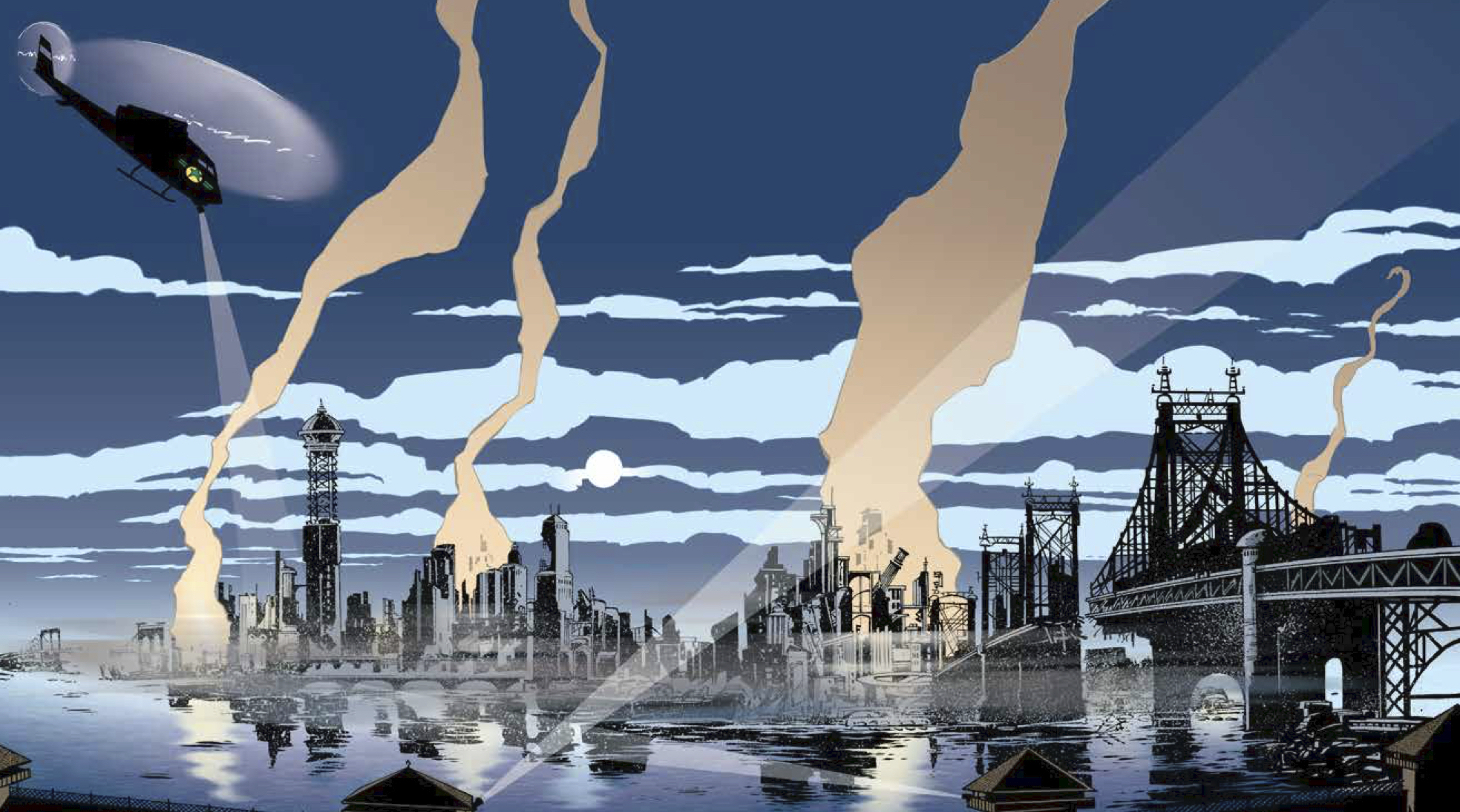
“So, then you have to have a good plot. Let’s make it like a Risk board. We’ll divide Gotham up into different fiefdoms, and every villain is going to have his own area to rule, and Batman’s going to go through each fiefdom, region by region, and take it back. The cops will have theirs, the Penguin will have his, the Riddler will have his, the Joker will have his. The way to compel Batman to fight without any support is to take away Gotham City altogether.”
—
12. Blood Brothers. Jeff Matsuda’s inspiration for his version of Bane, as seen in the animated series The Batman, really sucked.
“When I was a kid, we had mosquitoes, and they’d land on us,” he says. “Once they bite you, they’re stuck there for a moment, and if you keep pumping your muscle, you force it to suck your blood and its abdomen starts to grow and separate, and you’d see that blood moving through… and that’s where our version of Bane came from. When he expands and becomes stronger, angrier, bigger, his clothes stay the same size, but they stretch and separate.”
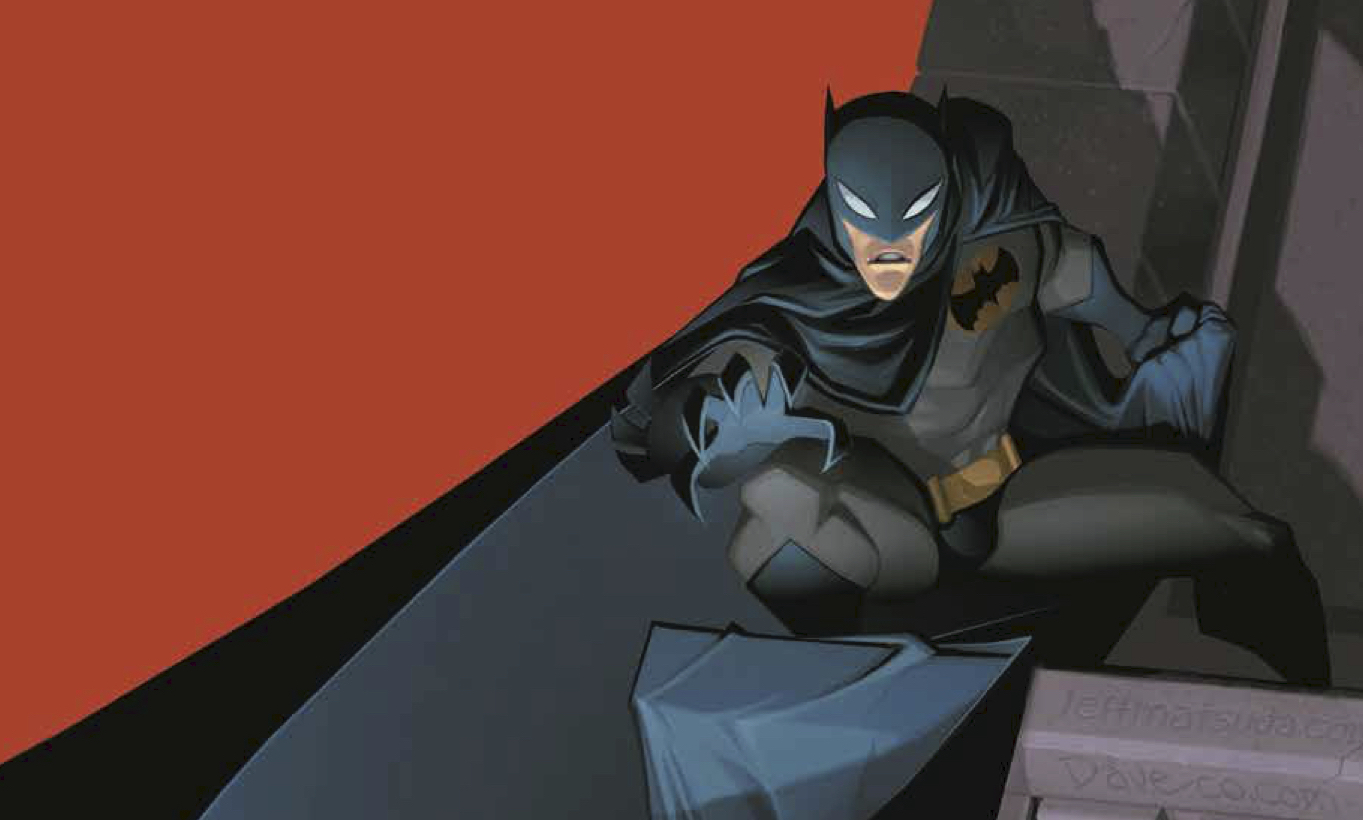
—
13. And Who, Disguised as Ra’s al Ghul. In 1989, artist Denys Cowan teamed up with writer Sam Hamm for the memorable three-part story Blind Justice, to celebrate the 50th anniversary of Batman’s introduction. Their story included a look at the training that Bruce Wayne underwent to become the World’s Greatest Detective and introduced one of his mentors, Henri Ducard, who would play a prominent role in the 2005 feature film Batman Begins.
“When I went to see Batman Begins, I went with my wife and was sitting next to Jim Lee and a bunch of other artists, just watching the movie at the Hollywood premiere,” recalls Cowan. “I remember watching and saying, “Oh my god, that’s Ducard! That’s the character Sam [Hamm] and I created! I had no idea he’d be played by Liam Neeson. None. I was floored. This is so cool!
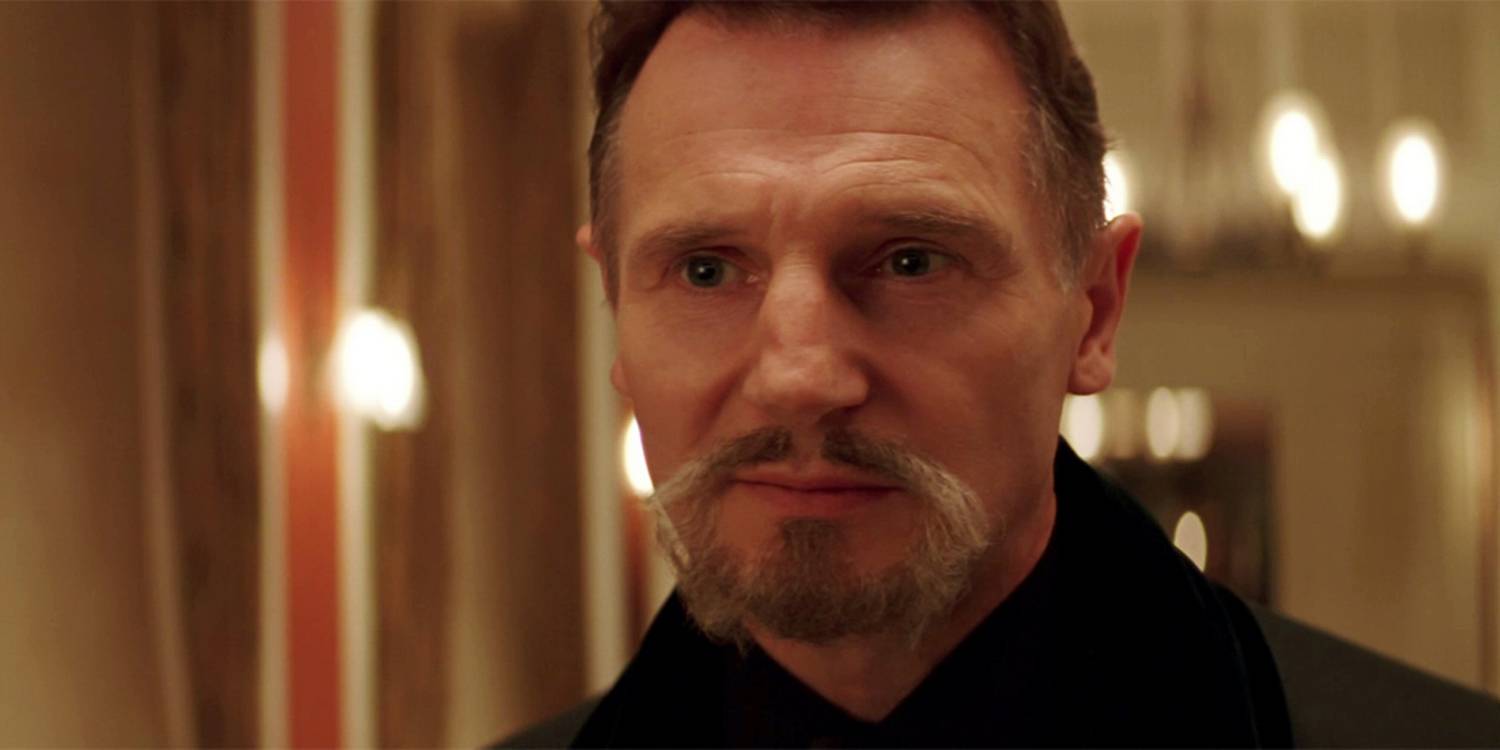
Liam Neeson as Ducard/Ra’s
“Then I’m at the after-party, and all the stars from the movie are there. It was incredible. I don’t remember who, but somebody introduced me to Liam Neeson. They brought him over to me, as the guy who created Henri Ducard, and he asked me all kinds of questions about him. ‘I love that character! When did you come up with him? How did you come up with that?’ I’m there like, ‘I can’t believe I’m talking comics with Liam Neeson!’ I couldn’t even tell you what I said, but I can remember what he said. Very nice guy.
“But the very first time I found out about [Ducard’s inclusion] was when I watched the movie.”
—
Batman: The Definitive History of The Dark Knight in Comics, Film, and Beyond, by Andrew Farago and Gina McIntyre is published by Insight Editions. The 400-page, oversized hardcover lists for $75 but can be purchased for less at booksellers such as Amazon.
—
MORE
— The TOP 13 BATMAN STORIES EVER — RANKED. Click here.
— The ULTIMATE BATMAN READING AND VIEWING GUIDE. Click here.

December 17, 2019
As much as I like Batman, there have been so many big expensive hardcover tributes or complete histories of, that by this time I feel like I’m kind of tapped out. Can there really be much more left unwritten about the history of Batman?
December 17, 2019
Yes, there was that much left unwritten about Batman. Buy five or six copies of my book and you’ll find out just how much unexplored history there is.
December 18, 2019
I concur with what Andrew says. This book is extraordinary. And I say this as someone who has been reading him — or about him — for 47 years.
December 17, 2019
Andrew Farago’s love for the “Batman” brand is very believable.